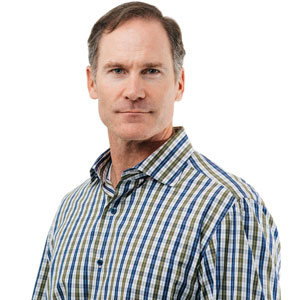 James Bell, CEO
James Bell, CEOThese cold storage facilities must maintain low, stable temperatures 24 hours a day. With energy costs on the rise, cold storage operators and utilities are looking for flexible and efficient energy solutions and alternative energy sources that require greener and more reliable storage technologies. Energy storage with the ability to optimize the time and amount of energy used is key to managing energy costs—enter Viking Cold’s Thermal Energy Storage (TES) technology.
Increased System Efficiency Through Flexibility
Viking Cold’s TES systems store energy in the form of cold to be used at times that provide the most economic benefit to cold storage operators. Improved system efficiencies and time of use flexibility consistently save customers 20%-35% of their energy spend. This flexibility also provides a resource for utility grid operators to help reduce energy demand fluctuations and stabilize the grid—helping to avoid building costly new generation infrastructure and substantially reducing carbon emissions.
The genesis of TES in freezers was born when Paul Robbins, the founder and inventor of Viking Cold’s Thermal Energy Storage technology, saw the need for improved energy efficiency and food protection in the freezer space while shipping frozen food between warehouses in Florida and Puerto Rico. He identified extremely high-energy costs during transit as well as in the recipients’ cold storage facilities. Viking Cold’s TES system was developed to minimize energy usage to reduce costs while maintaining stable freezer temperatures that better protect food at every point in the cold chain.
“Not only have we developed a creative way to provide value to our customers, but the real innovation is the energy savings while preserving food and protecting the environment,” says Bell.
Innovative Technology for the Global Cold Chain
The Viking Cold TES system is comprised of three key elements: Phase Change Material (PCM), intelligent controls, and a cloud-based monitoring and reporting portal.

Not only have we developed a creative way to provide value to our customers, but the real innovation is the energy savings while preserving food and protecting the environment.
One unique application in California paired Viking Cold’s TES technology with onsite solar PV at a large cold storage facility. This solar energy storage solution resulted in a 95% reduction in overnight grid demand and a 39% energy cost savings overall. The flexibility of the energy storage allowed the facility to achieve LEED Gold V4 Certification and earn the “2017 Energy Champion Award” from their local utility.
“We are focused on creating innovative products that meet the needs of our customers—from small grocery stores to industrial freezer operators to utilities,” according to Bell. The company’s TES systems are being deployed in cold storage warehouses, supermarkets, restaurants and food processing facilities with installations planned on four continents in 2018.
Operators & Utilities See Benefits of Thermal Energy Storage
Because of the high-energy demand and energy consumption of cold storage facilities, many utilities have recognized that these “behind the meter” TES systems fit well into their incentive programs to help balance the grid and delay costly infrastructure investments. The Viking Cold TES systems have been tested and accepted by numerous utilities around the country for installations in retail, commercial, and government facilities.
Viking Cold’s Thermal Energy Storage solutions are transforming the cold chain while protecting the world’s food supply. This storage technology continues to grow and evolve as more operators and utilities recognize the value in cost savings and environmental benefits that are achieved through integrating these innovative and efficient solutions.
|
Share this Article:
Tweet
|
Company
Viking Cold Solutions
Headquarters
.
Management
James Bell, CEO
Description
Viking Cold Solution’s Thermal Energy Storage (TES) reduces energy by 20-35% while stabilizing temperatures for improved efficiencies of cold storage facilities